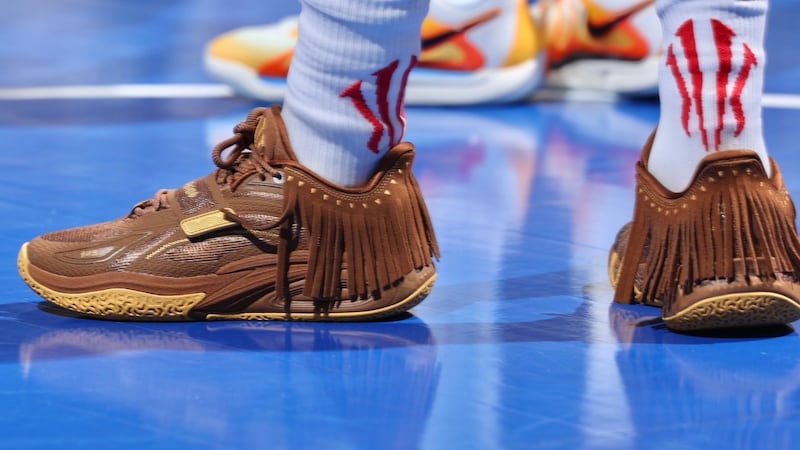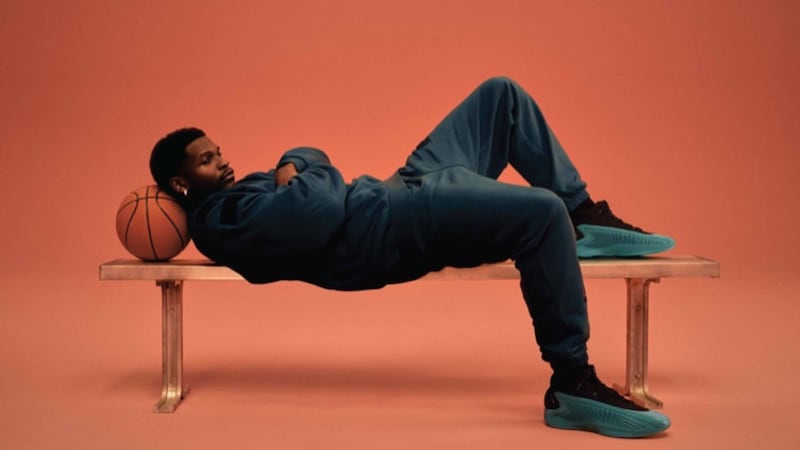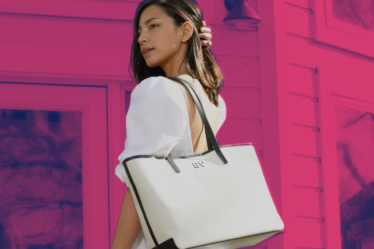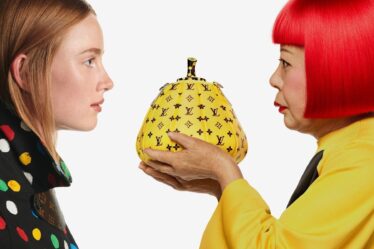
Whether the Boston Celtics or Dallas Mavericks claim this year’s NBA championship, one guaranteed winner is Nike’s Jordan brand.
Two of the most exciting players in the finals are the Celtics’ Jayson Tatum and Mavericks’ Luka Doncic, both of whom are signed by Jordan brand, guaranteeing plenty of time in the spotlight. But their shoes aren’t the only ones that stand out on the court. Chinese sportswear label Anta secured a landmark finals appearance for the Anta Kai 1, its debut signature sneaker with Mavericks’ point guard Kyrie Irving. And the Celtics’ Jrue Holiday could become the first NBA player to win a championship while wearing the signature sneaker of a WNBA player, Sabrina Ionescu.
The question is how much any of that still matters.
Signature shoes have long been a crucial element of sneaker marketing strategies, especially in basketball. There’s probably no better example than Nike’s partnership with Michael Jordan, which would later become the $6 billion Air Jordan business that helped make Nike the global powerhouse it is today. These shoes let brands show off their athletic-performance credentials and help them convert a superstar’s fans into buyers of their products. For that, brands shell out huge sums to top names in sports and pay for big-budget marketing campaigns.
Yet despite this level of investment, these franchises are rarely top-sellers for brands. Where once only a handful of athletes had their own shoes, now the market is flooded with numerous styles that critics say have all started to look too much alike. If you’re not a frequent basketball player — or a fan of the athlete in question — it’s unlikely you’ll be spending $150 on their shoe. And as sneakers became the default in everyday wardrobes, consumers gravitated towards lifestyle products inspired by sports though not necessarily meant for playing them.
But there are signs that the category is staging a comeback. A new generation of young talents, new designs and bold marketing are reviving interest in athletes’ lines. In May, the top two high-heat sneaker launches — silhouettes which sold out and are trading at premiums on the secondary market — were both performance shoes: the Nike Kobe 8 “Mambacita” and the Adidas Harden 1 “Blue Fusion,” according to a report by Wedbush analyst Tom Nikic. On resale platform StockX, trades of the top 15 signature sneaker lines are up 37 percent year-on-year, said Drew Haines, merchandising director for sneakers and collectables.
Brands that have the right mix of ingredients in their shoes might not see Air Jordan levels of success anymore, but they can still notch significant wins.
“The category is as important as ever for brands, and driving genuine heat right now,” Haines said.
New Players
There have long been calls for some fresh energy in basketball shoes. There are 32 active NBA players with signature sneakers on the market right now. Many of the lines are several years old. Nike’s LeBron James line is now in its 21st iteration, while the brand’s line with Kevin Durant has released 16 different iterations and Jordan Brand’s Chris Paul sneaker has 13.
But a changing of the guard from long-tenured veterans like James, Durant and Steph Curry (none of whom made it past the first round of the playoffs this season) to the likes of Doncic, Tatum, Anthony Edwards, Ja Morant and rookie Victor Wembanyama has given brands fresh stories to tell through young signature athletes who bring with them a new generation of basketball fans to market to.
Newfound variety in the brands, design elements and types of athlete ambassadors in the category is also helping a revival. While Nike and Jordan still dominate, Adidas basketball is experiencing unprecedented attention thanks to the runaway success of its AE 1 sneaker with Edwards. Other footwear giants are getting in on the action, too: Skechers surprised everyone by entering the basketball footwear category in 2023 and signed Joel Embiid, a seven-time All-Star and 2023 NBA season MVP, in April this year.
Smaller entrants are seeing some success. Anta’s Kai 1 has been a surprise hit with sneakerheads. On StockX, trades of Anta sneakers are up over 5,100 percent in the first five months of this year compared to the same period in 2023.
It speaks to the value that remains when brands can find the right athletes. Anta and other Chinese businesses including Li-Ning, 361 Degrees and Rigorer have increasingly used signature deals to entice NBA talent either overlooked or unconvinced by the offerings of more established brands. Anta, which still generates more than 95 percent of its sales in China itself, has used the signature sneaker market as a testing ground for gauging demand for its products in the US market. Irving became the company’s chief creative officer when he signed in July — an example of the type of role and status a player can achieve at such a brand compared to being one of many sponsored athletes at Nike or Adidas.
Meanwhile, the rise of the WNBA has seen brands use signature deals as a means of securing endorsement deals ahead of their rivals with the sport’s most in demand athletes, like Sabrina Ionescu, Caitlin Clark and Angel Reese.
“All the new activity we are seeing in performance basketball on a global scale is really encouraging for the signature sneaker category,” Haines said.
Running It Back
At some point along the way, the signature sneaker category got stale. Sneakerheads frequently lamented how line after line looked the same, and that brands had been playing it safe for too long. Some athletes agreed.

“There needs to be some disruption in the sneaker game because everything is kind of getting boring,” said Jaylen Brown of the Boston Celtics to Complex Sneakers’ Joe La Puma in October. “The designs are getting lazy. There’s no creativity. There’s no authenticity. Some of the sneakers that are out right now, even for athletes, are trash.” (Brown has remained a sneaker free agent since the expiration of his rookie deal with Adidas in 2021, and looks set to become the first player in 45 years to win the NBA Finals Most Valuable Player Award without a shoe deal.)
When brands can come up with an appealing new design, the audience is there. The biggest recent success in signature sneakers belongs to Adidas, Anthony Edwards and their AE 1 silhouette, which launched in December. The sneaker has sold out every Adidas drop in most sizes and colourways and has racked up over 17,500 trades on StockX at an average price of $126, a 22 percent premium on its retail price.
The sneaker itself brought a sleek, minimalist new look and feel to basketball footwear, becoming instantly identifiable on court — and in the streets — thanks to the honeycomb-design supports hugging either side of the shoe. It became coveted by not just basketball fans but fashion and streetwear consumers too, bringing back a trend popular in the 2000s where it was common to pair performance basketball sneakers with regular outfits.
“In the past we’d been chasing the category and trying to be something we’re not,” said Eric Wise, global general manager of Adidas basketball, who admitted even the internal teams were surprised by the extent of the reaction to the sneaker. “[The AE 1] speaks to a new strategy — there’s a simplicity to the product but also an aggressiveness to the marketing which lets the athlete’s personality come through authentically.
Adidas rolled out the sneaker with a series of memorable campaigns that played up Edwards’ humour and self-confidence on and off the court, with commercials that take shots at basketball sneakers from rival brands and bring up “receipts” from high-profile critics of Edwards in a manner that has drawn comparisons to the swagger of Nike’s early Air Jordan campaigns in the ‘90s. The AE 1′s popularity got a boost, too, from Edwards’ standout performances on court this season, characterised by his soaring dunks and gritty defence.

Nike, meanwhile, has been bold with its own signature category marketing. During the solar eclipse in May, the brand took the opportunity to reveal its new logo for the recently signed Wembanyama, carving the shape of a giant alien into a field in Texas, a reference to the nickname for the French rookie coined by LeBron James during a 2022 press conference.
The Right Mix
It’s by no means a guarantee that a sneaker line will be successful because a big brand teams up with a popular athlete. Signature sneakers are competing for attention in an ever-more crowded footwear market teaming with celebrities such as sports stars but also musicians, actors and influencers. And above all, they still need to be designed foremost for performance.

“I think in the past we’ve tried to do it the backwards way, like: ‘Hey, let’s make it a cool shoe,’” said Wise. “But then if the shoe doesn’t perform there’s an issue with credibility.”
There will also likely never be another athlete partnership as successful as the Air Jordan line, which came along at the right moment in a market that was still taking shape and had just the right mix of ingredients. But the right product, backed up by a charismatic athlete and a culturally relevant marketing strategy, can still break out of the sport itself and become something regular consumers actually wear. That’s still a win.



